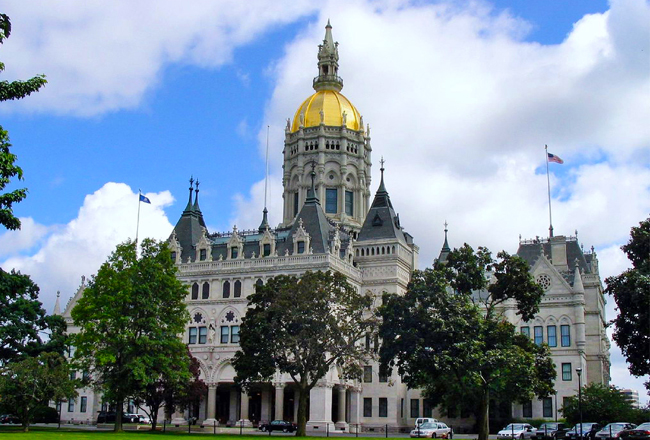Connecticut General Assembly expected to vote next week on tolls
A public hearing on bringing highway tolls back to Connecticut has been scheduled for Friday, with the General Assembly expected to vote on Monday and Tuesday of next week.
 A draft of the long-awaited bill includes language establishing a Transportation Policy Council that would have the power to raise future toll rates. Previously, the state Department of Transportation was the only agency that held such control; it would now only make recommendations for toll increases.
A draft of the long-awaited bill includes language establishing a Transportation Policy Council that would have the power to raise future toll rates. Previously, the state Department of Transportation was the only agency that held such control; it would now only make recommendations for toll increases.
“The Department of Transportation may propose to the Transportation Policy Council established pursuant to section 13b-13b of the general statutes, as amended by this act, to change the toll rate for any tolled bridge by the rate of inflation or a rate based on the construction cost index, whichever is greater,” the draft states. “No proposed toll rate change shall become effective unless approved by the Transportation Policy Council established pursuant to section 13b-13b of the general statutes, as amended by this act.”
As previously reported, the tolls ”“ which would only be applied to 18-wheelers ”“ would be placed at:
- I-84 over the Housatonic River on the Newtown-Southbury border, at the Rochambeau Bridge;
- I-95 over Metro-North Commuter Railroad bridge in Stamford;;
- I-95 over Route 33 in Westport;
- I-684 over the Byram River in Greenwich;
- The Mixmaster at the intersection of Routes 84 and 8 in Waterbury;
- I-84 over Berkshire Road in West Hartford;
- The Charter Oak Bridge in Hartford;
- I-95 over the Metro-North railroad in West Haven;
- I-95 over Route 161 in East Lyme;
- The Gold Star Memorial Bridge between Groton and New London on I-95 over the Thames River;
- I-395 over the Moosup River in Plainfield; and
- Route 8 south of I-84 in Waterbury
Gov. Ned Lamont also announced that a compromise deal had been reached on a new state bond package, which he had refused to approve until state lawmakers adopted a tolls proposal, or demonstrated an alternative means of paying for upgrades to the state”™s transportation system over the next few years.
The new two-year bond plan includes $1.7 billion in general obligation bonding for the current fiscal year, with about $100 million reserved for transportation infrastructure. Lamont had originally hoped to keep general obligation bonding to a little more than $1.4 billion.
The bonds are used to fund municipal school construction, capital projects at public colleges and universities, state building maintenance, open space and farmland preservation, and a host of other, smaller community-based projects. As a result, state funds to municipalities ”“ including $60 million for a local road maintenance program that also pays for winter snow removal ”“ will be freed.
The bill also states that construction bonds issued over the next two years would maintain that the trucks-only provision would remain in place through 2030.
However, at a Jan. 28 press conference, Senate Minority Leader Len Fasano said that technically the construction bonds could be refinanced by a future legislation in order to pay them off before 2030 ”“ and thus pave the way for instituting tolls for all vehicles.
The state”™s income from tolls is estimated at $150 million to $175 million per year, which would then be used to pay back low-interest federal loans that would help fund Lamont”™s 10-year, $19 billion CT2030 transportation initiative. The loans would be repaid over 35 years.
Lamont and fellow state Democrats have been pushing for the transportation bill to be voted upon before the start of the next legislative session, which begins on Feb. 5.
Republican opposition to tolls of any kind has been fierce, but Democrat leaders have said over the past few weeks that they believe they have the votes to pass the bill. Democrats have a 22-14 majority in the Senate and a 91-60 majority in the House.